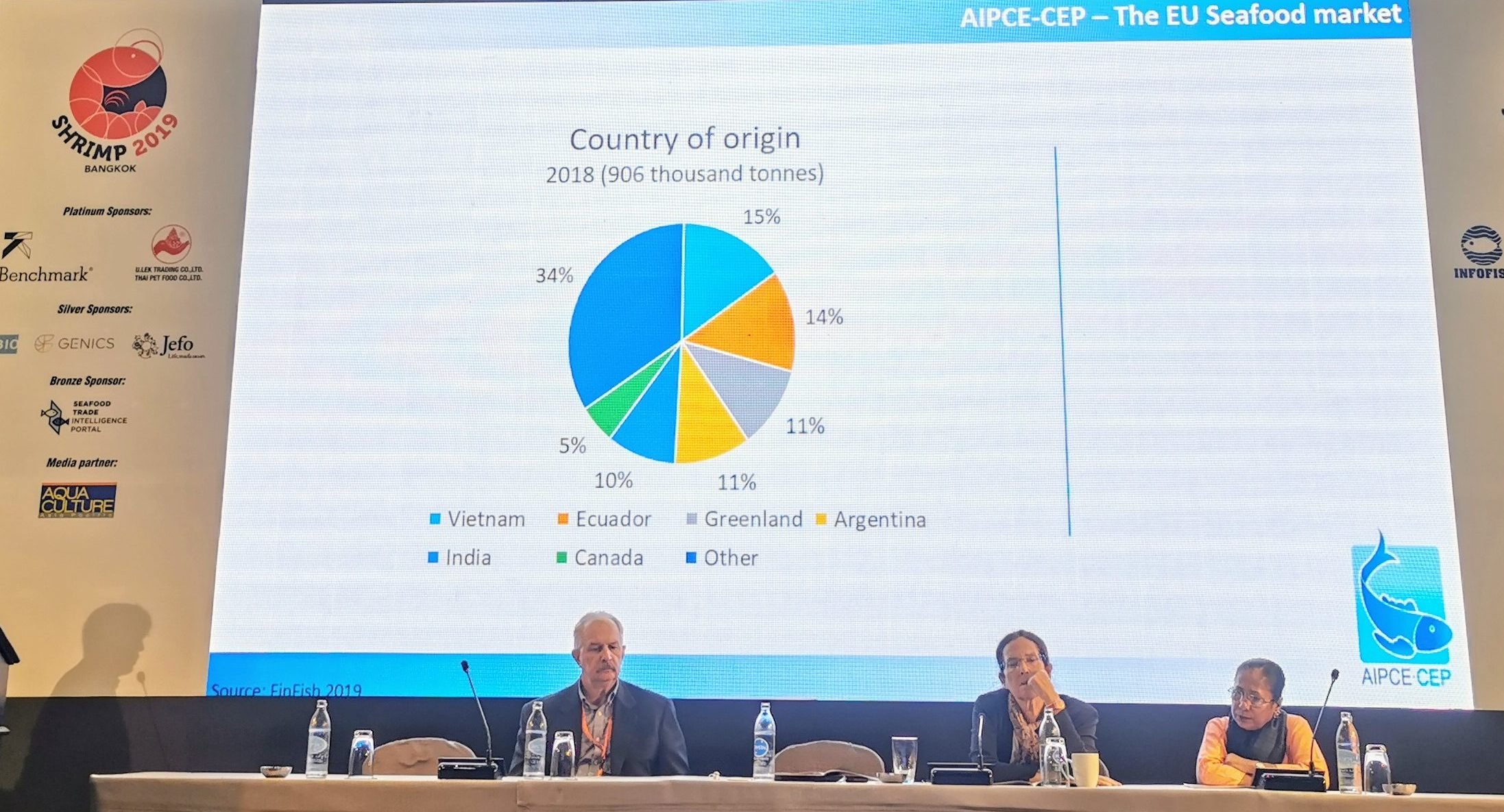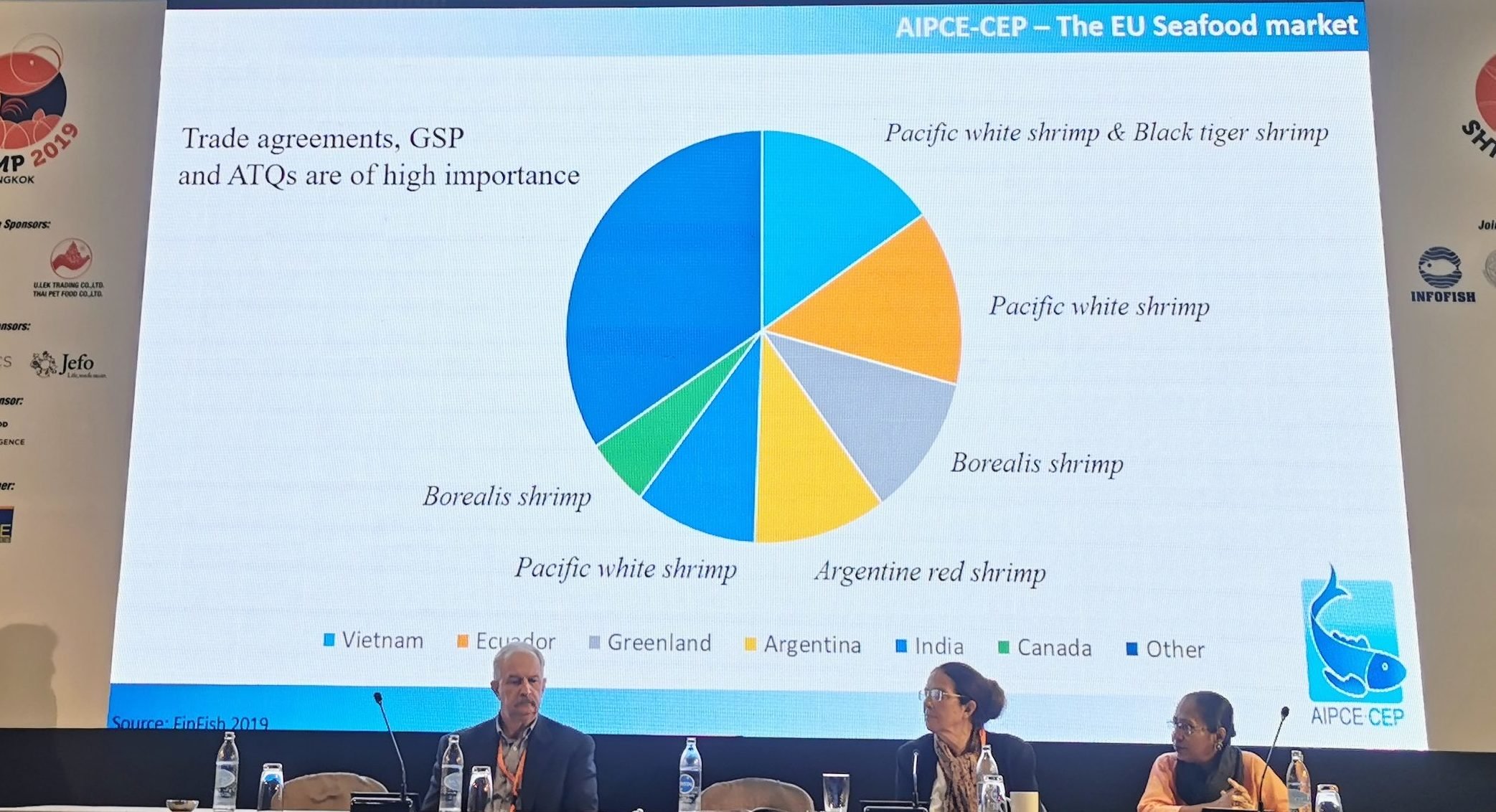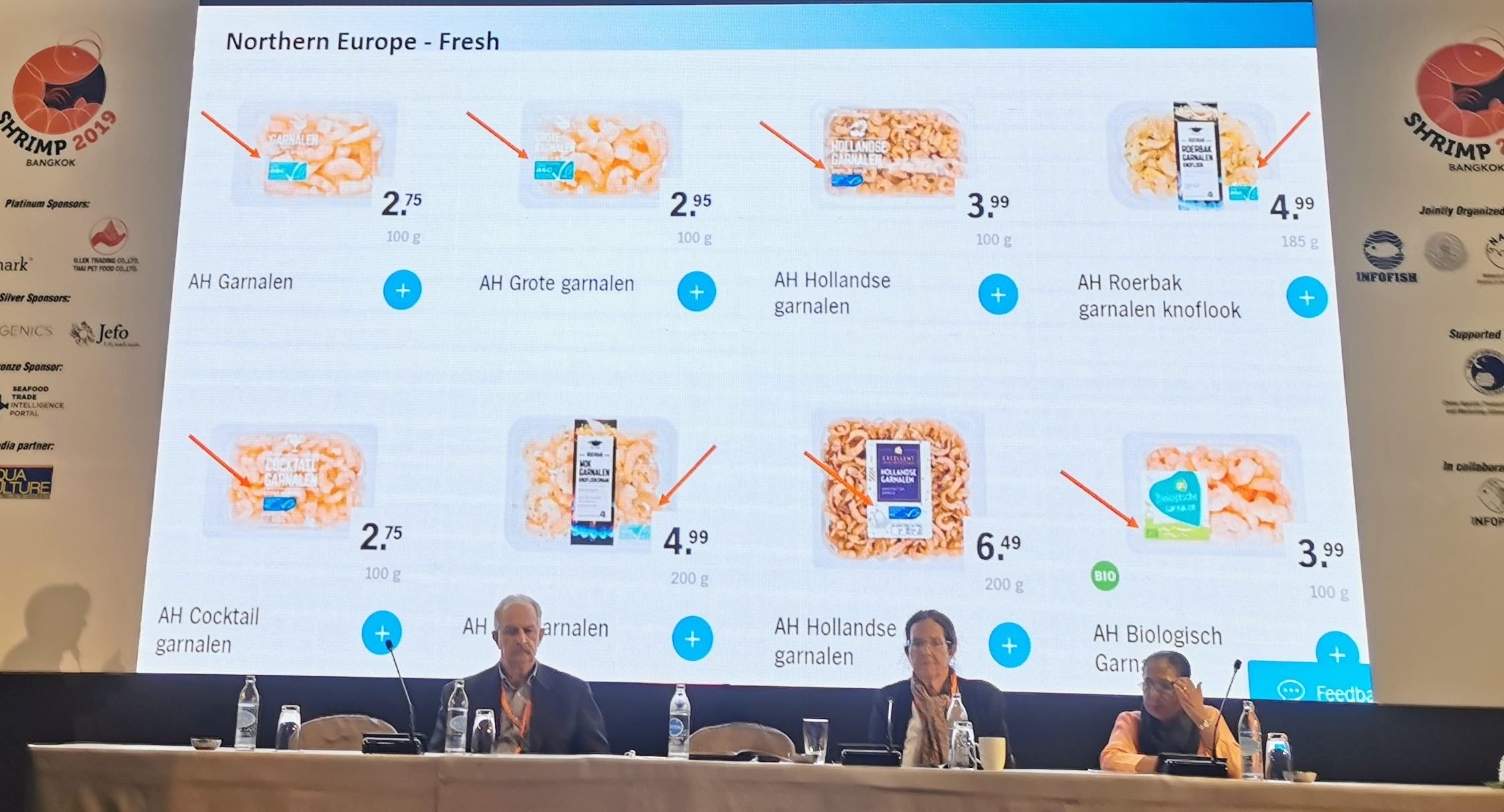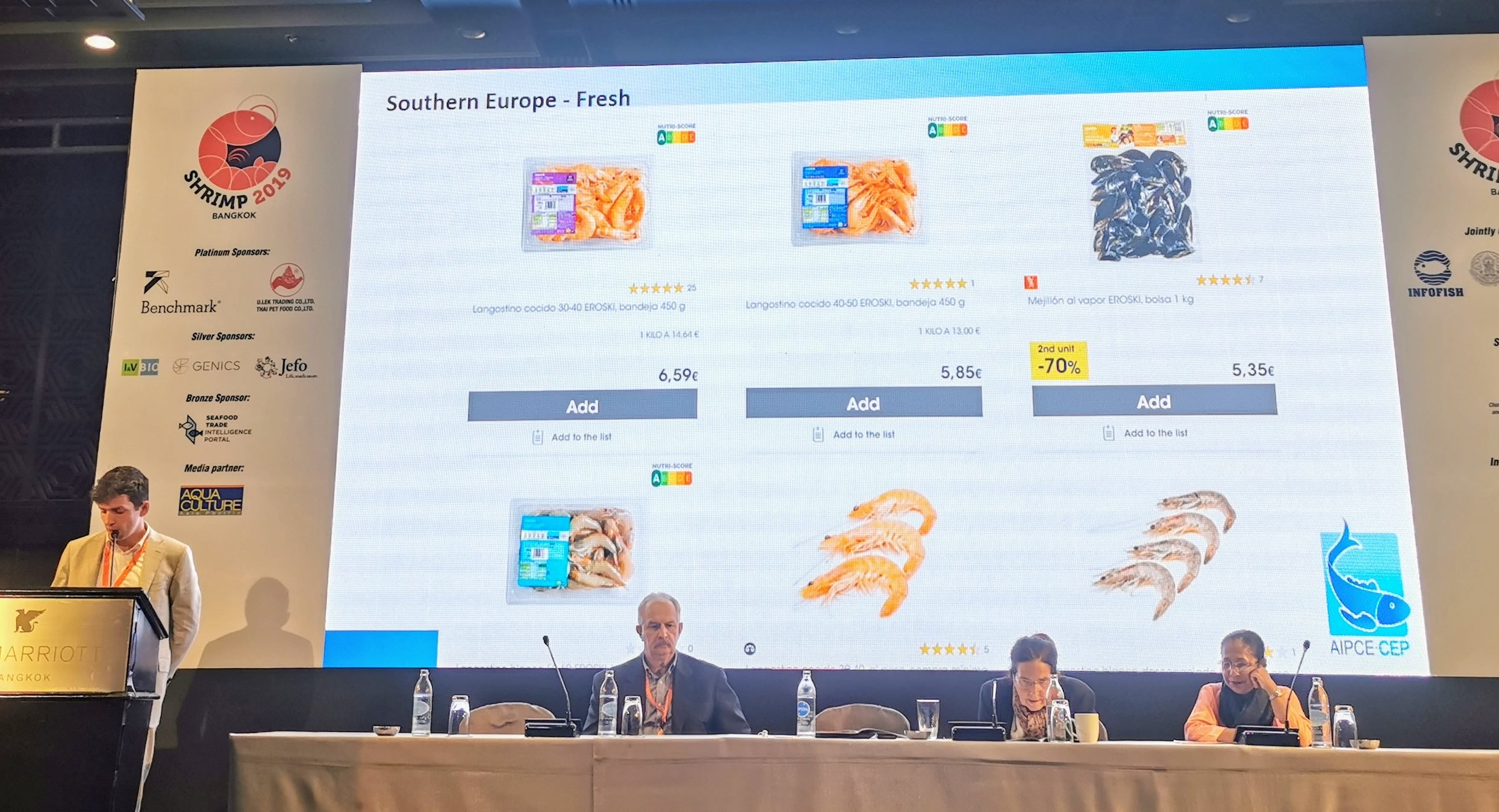EU SHRIMP IMPORTS SURPASS 900.000T, VIETNAM BIGGEST SUPPLIER
12 Sat, 2019
The EU imported 906,000 metric tons of shrimp based on whole weight equivalent, up 3% compared with 2017.




According to Mike Turenhout, director for markets and resources at the Dutch Fish Importers Association and board member of AIPCE-CEP, some 15% of shrimp (whole weight equivalent) came from Vietnam, with the next largest supplier Ecuador with 14%, followed by Greenland with 11%.

The main imported shrimp species is Penaeus vannamei shrimp, followed by Borealis shrimp.

Turenhout said Vietnam would likely cement its dominance in the market following the conclusion of a free trade agreement with the EU, which could happen next year. “The possibility of removing tariffs would lead to some shift in trade flows.” He noted among top-six countries exporting to the EU, Vietnam makes the greatest use of Generalized System of Preferences (GSP) tariffs and Autonomous Tariff Quotas (ATQs), now that Ecuador already benefits from its own FTA with the EU.
Turenhout noted most shrimp is sold in the EU at retail, although foodservice is also important. In northern Europe, the preference is for peeled, headless shrimp, both in fresh and frozen categories. “All the shrimp are peeled, and also some marinated shrimp.”

Eco-labels are more popular in the north, although price is still the main driver. “Eco-labels in northern Europe are growing. Another thing is transparency, for the EU, it’s important to show you can trace back product from the source, and guarantee shrimp doesn’t çome from IUU fisheries.”

In southern Europe, meanwhile, the preference is for head-on, shell-on shrimp, both in fresh and frozen categories.
Turenhout said one problem facing the market is overglazing. “Mainly in the wholesale market there’s up to 30% difference in the weight,” he said.
Source: https://www.undercurrentnews.com
Related Post
The true fishmeal carbon footprint
The established Life Cycle Analysis (LCA) methodology to assess the fishmeal carbon footprint only accounts for the vessel fuel and post-harvest processing energy while ignoring the carbon sequestration potential of fish.
View more
Freezing Tropical Fruits: Convenient and Effective Solution with Octofrost Machines
Tropical fruits are always a great choice for providing nutrition and fresh flavor to daily meals.
View more


